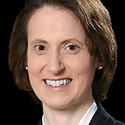11:09 AM
How U.S. Bank Expanded Its Travel Expense Management Programs
Launching a low-cost branded solution in 2010 to automate travel expense management at mid-sized businesses proved effective for Minneapolis-headquartered U.S. Bank. However, over time, customers began requesting more. "Our branded offering, U.S. Bank Expense Management, is designed as a streamlined solution with baseline capabilities," explains Mary Miklethun, travel program product manager for the bank. "But some customers started asking for features and functionality that extended beyond the baseline."
[U.S. Bank's payments innovation team has learned how to overcome some major obstacles to innovation in large organizations: Innovation Lessons Learned from U.S. Bank]
By mid-2012 U.S. Bank ($360 trillion in total assets) began internal discussions about how to address customer requests. Ultimately, it decided against another branded solution. "Although our branded solution was built by an external partner, we deployed and supported it internally," Miklethun says. "The complexity of expense management would have meant an unacceptably long development period to bring an upgraded solution to market. Also, it would have required an ongoing process for evolving support structures around the product."
Building an in-house solution was also rejected for falling outside the bank's core competencies. This left partnering with a software provider. Coincidentally, the bank was undertaking a parallel adoption internally for its own employees. "The RFP process for the internal effort resulted in a quantitative scorecard that we leveraged to evaluate partnerships for our external customers," Miklethun relates.
A Different Approach to Partners
As the partner search progressed, U.S. Bank shifted its focus from a single provider to two or more. "It was common for solution providers to partner with multiple banks," Miklethun says. "We decided to flip the paradigm on its head by saying it made sense for our bank to partner with multiple providers."
This strategy enabled U.S. Bank to address the needs of smaller and larger enterprises as well as middle-market businesses. After an evaluation process, the bank selected Concur and Chrome River Technologies .
"Concur not only had robust expense management capabilities, but also an end-to-end booking and expense solution that provides rich travel data," says Miklethun. Chrome River, she adds, offered a full-featured yet cost-effective solution, ChromeRiver Expense, with a "highly- intuitive and modernized interface that really stood out."
After inking referral agreements with both Concur and ChromeRiver in mid-2013, U.S. Bank set up a standard corporate travel card data feed to each company to support the partnership. In late October, the partnerships were officially announced with promotions highlighting the bank's strategy of offering three types of solutions.
Thus far the only real challenge has been adoption rate. "According to the most recent industry study, about a third of businesses lack automated expense management," says Miklethun. "Therefore, we believe about a third of our customers could be automating."
"Although we've had a steady stream of adoptions," she adds, "we believe it could be better. So, we're adding expense management automation to the bank's larger initiative for optimizing and growing our card programs. The full-time person dedicated to that initiative will champion our solutions, too."
Lessons Learned
As for lessons learned, Miklethun says it's critical to make a decision and take the plunge. "Avoid analysis paralysis," she advises. "It's possible to think too much and take too long to decide."
Another piece of advice: Think comprehensively about going the branded route. "Our branded solution was the right choice," she emphasizes. "But it can be a challenge to develop a support model around a solution that another company builds."
Regardless, U.S. Bank is definitely reaping benefits from its three-option strategy. "Industry statistics suggest about a 20% growth in card spending for institutions with an expense automation solution," says Miklethun. "Our internal results are in the neighborhood of the industry numbers."
Looking forward, offering multiple expense management solutions also supports U.S. Bank's strategic goal of extending its capabilities across the travel management value chain. "In addition to expense management, we're working toward forming other relationships to tie our card programs into all the activities in that value chain," Mikleson says.
Snapshot:
Institution: U.S. Bank (Minneapolis)
Assets: $360 trillion in total assets
Business Challenge: Accommodate customer demand for more features and functionality in its travel expense management offering.
Solution: Partnerships with Concur and Chrome River Technologies for expense and travel management systems.
Anne Rawland Gabriel is a technology writer and marketing communications consultant based in the Minneapolis/St. Paul metro area. Among other projects, she's a regular contributor to UBM Tech's Bank Systems & Technology, Insurance & Technology and Wall Street & Technology ... View Full Bio



























